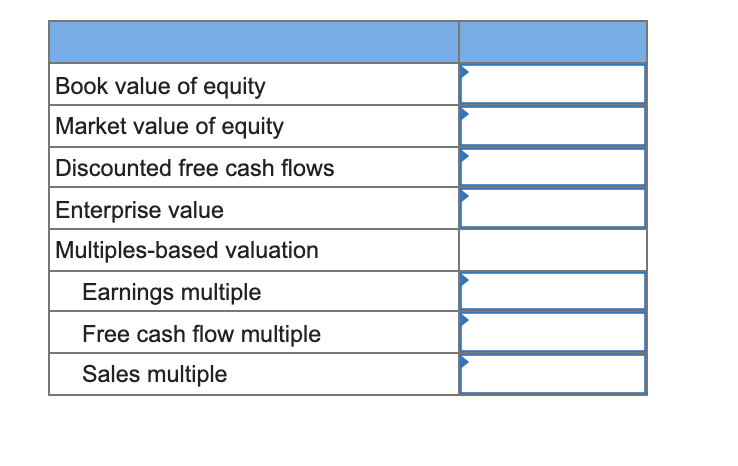Williams Company is a manufacturer of auto parts having the following financial statements for 2021-2022. Balance Sheet December 31 2022 2021 Cash $ 276,000 $ 151,000 Accounts receivable 166,000 241,000 Inventory 401,000 191,000 Total current assets $ 843,000 $ 583,000 Long-lived assets 1,800,000 1,660,000 Total assets $ 2,643,000 $ 2,243,000 Current liabilities 392,000 335,000 Long-term debt 900,000 960,000 Shareholders’ equity 1,351,000 948,000 Total debt and equity $ 2,643,000 $ 2,243,000 Income Statement For the years ended December 31 2022 2021 Sales $ 3,660,000 $ 3,760,000 Cost of sales 2,820,000 2,920,000 Gross margin 840,000 840,000 Operating expenses* 516,000 274,000 Operating income 324,000 566,000 Taxes 113,400 198,100 Net income $ 210,600 $ 367,900 Cash Flow from Operations 2022 2021 Net income $ 210,600 $ 367,900 Plus depreciation expense 140,000 130,000 + Decrease (−increase) in accounts receivable and inventory (135,000) − + Increase (−decrease) in current liabilities 57,000 − Cash flow from operations $ 272,600 $ 497,900 *Operating expenses include depreciation expense. Additional financial information, including industry averages for 2022, where appropriate, includes: 2022 2021 Industry 2022 Capital expenditures $ 170,000 $ 260,000 Income tax rate 35% 35% 35.0% Depreciation expense $ 140,000 $ 130,000 Dividends $ 34,000 $ 34,000 Year-end stock price $ 3.85 $ 4 25.00 Number of outstanding shares 1,960,000 1,960,000 Sales multiplier 1.50 Free cash flow multiplier 18.00 Earnings multiplier 9.00 Cost of capital 5% 5% Accounts receivable turnover 11.10 Inventory turnover 10.50 Current ratio 2.30 Quick ratio 1.90 Cash flow from operations ratio 1.20 Free cash flow ratio 1.10 Gross margin percentage 30.0% Return on assets (net book value) 20.0% Return on equity 30.0% Required: Develop a business valuation for Williams Company for 2022 using the following methods: (1) book value of equity, (2) market value of equity, (3) discounted cash flow (DCF), (4) enterprise value, and (5) all the multiples-based valuations for which there is an industry average multiplier. For the calculation of the DCF valuation, you may use the simplifying assumption that free cash flows will continue indefinitely at the amount in 2022.
Williams Company is a manufacturer of auto parts having the following financial statements for 2021-2022.
| Balance Sheet | ||
| December 31 | ||
| 2022 | 2021 | |
|---|---|---|
| Cash | $ 276,000 | $ 151,000 |
| Accounts receivable | 166,000 | 241,000 |
| Inventory | 401,000 | 191,000 |
| Total current assets | $ 843,000 | $ 583,000 |
| Long-lived assets | 1,800,000 | 1,660,000 |
| Total assets | $ 2,643,000 | $ 2,243,000 |
| Current liabilities | 392,000 | 335,000 |
| Long-term debt | 900,000 | 960,000 |
| Shareholders’ equity | 1,351,000 | 948,000 |
| Total debt and equity | $ 2,643,000 | $ 2,243,000 |
| Income Statement | ||
| For the years ended December 31 | ||
| 2022 | 2021 | |
|---|---|---|
| Sales | $ 3,660,000 | $ 3,760,000 |
| Cost of sales | 2,820,000 | 2,920,000 |
| Gross margin | 840,000 | 840,000 |
| Operating expenses* | 516,000 | 274,000 |
| Operating income | 324,000 | 566,000 |
| Taxes | 113,400 | 198,100 |
| Net income | $ 210,600 | $ 367,900 |
| Cash Flow from Operations | ||
| 2022 | 2021 | |
|---|---|---|
| Net income | $ 210,600 | $ 367,900 |
| Plus |
140,000 | 130,000 |
| + Decrease (−increase) in accounts receivable and inventory | (135,000) | − |
| + Increase (−decrease) in current liabilities | 57,000 | − |
| Cash flow from operations | $ 272,600 | $ 497,900 |
*Operating expenses include depreciation expense.
Additional financial information, including industry averages for 2022, where appropriate, includes:
| 2022 | 2021 | Industry 2022 | |
|---|---|---|---|
| Capital expenditures | $ 170,000 | $ 260,000 | |
| Income tax rate | 35% | 35% | 35.0% |
| Depreciation expense | $ 140,000 | $ 130,000 | |
| Dividends | $ 34,000 | $ 34,000 | |
| Year-end stock price | $ 3.85 | $ 4 | 25.00 |
| Number of outstanding shares | 1,960,000 | 1,960,000 | |
| Sales multiplier | 1.50 | ||
| 18.00 | |||
| Earnings multiplier | 9.00 | ||
| Cost of capital | 5% | 5% | |
| Accounts receivable turnover | 11.10 | ||
| Inventory turnover | 10.50 | ||
| 2.30 | |||
| Quick ratio | 1.90 | ||
| Cash flow from operations ratio | 1.20 | ||
| Free cash flow ratio | 1.10 | ||
| Gross margin percentage | 30.0% | ||
| Return on assets (net book value) | 20.0% | ||
| Return on equity | 30.0% |
Required:
Develop a business valuation for Williams Company for 2022 using the following methods: (1) book value of equity, (2) market value of equity, (3) discounted cash flow (DCF), (4) enterprise value, and (5) all the multiples-based valuations for which there is an industry average multiplier. For the calculation of the DCF valuation, you may use the simplifying assumption that free

Trending now
This is a popular solution!
Step by step
Solved in 2 steps









